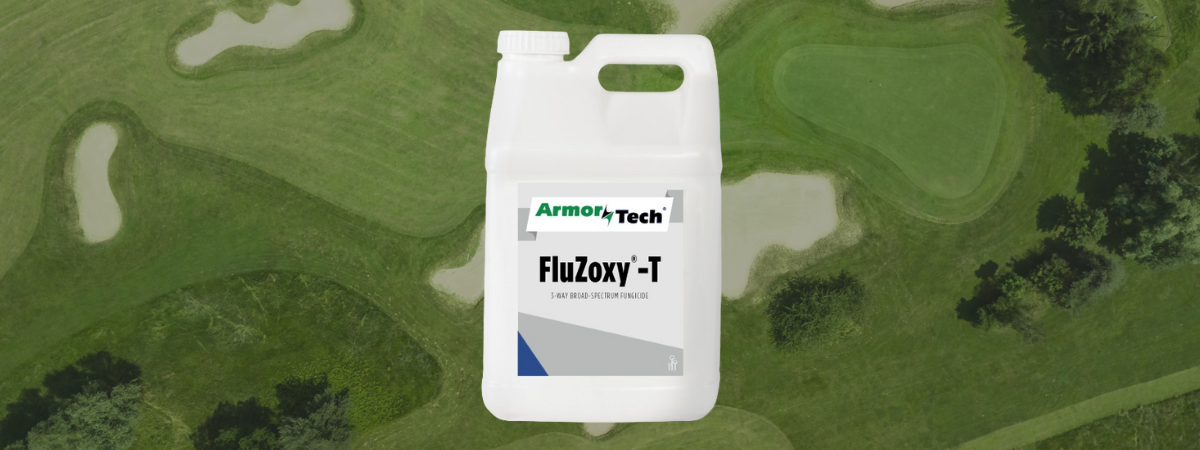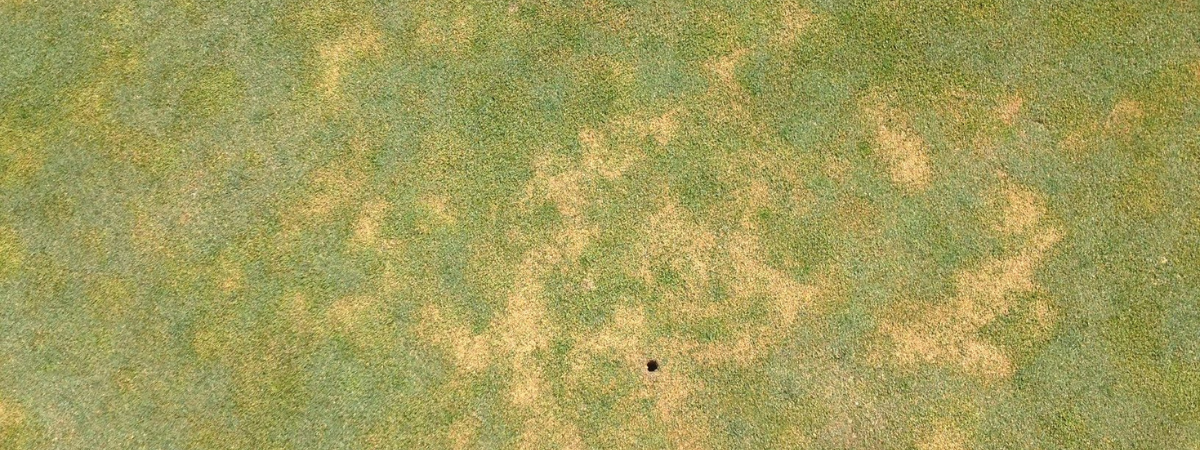Winterkill is turf loss during the wintertime. Its damage can be found in cool-season areas, warm-season areas, and the transition zone and there are several conditions that cause winterkill: crown hydration, winter desiccation, low-temperature kill, ice sheets, and snow mold. With this in mind, let’s take a look at how to help prevent some causes of winterkill before winter even starts.
Crown Hydration
Crown hydration generally occurs to greens and shorter-cut turf on semi-frozen soils in late winter and early spring as the turf is breaking dormancy. With frozen or half-frozen soils, water cannot percolate to drains, so the surface becomes saturated. If the temperature suddenly drops to around 20 degrees Fahrenheit after the soil thaws, the crown cells can flash freeze and rupture. The plant then dies. Young, newly growing tissue is more sensitive to rapidly changing temperatures. Poa annua is most susceptible and will often be the only species affected in a mixed, creeping bentgrass/Poa annua putting green.
There is not much you can do to eliminate the possibility of winterkill from crown hydration. However, there are some preventative measures to take:
- Treat turf in late fall with fertilizers, which are low in nitrogen and high in potassium. This will help the plant convert energy to carbohydrates and starch, thus strengthening the plant coming out of winter.
- Solid tine aerate to remove excess surface moisture.
- Eliminate low areas on the greens that tend to gather and hold water. Surface contouring is very important.
- With your last spray application, incorporate a low rate of penetrant to help prevent crown hydration, like Hydro-Pak Command.
Winter Desiccation
Snow can actually be a good thing for turf because it acts as insulation. When winter desiccation occurs, turfgrass does not have moisture in the way of snow cover or other protections during wintertime, which leaves it exposed to cold, dry wind and low temperatures that basically freeze-dry it. Areas of elevated turf are extremely susceptible to damage. Creeping bentgrass, Poa, and even bermuda can be affected. In fact, one recent winter in Missouri, there was an abundance of bermuda killed by desiccation. Missouri was in a late summer/fall drought that continued through winter, which was also very cold and resulted in bermuda kill.
Take these precautions to help guard against winterkill from desiccation:
- Ensure the turf has adequate fertility with high ratios of K as it goes into dormancy, so, turf can build up energy before going to bed.
- It’s like a blanket on the turf and covers the crown of the plant, insulating it from the cold wind and air.
- Use covers when applicable. While covers are not used as much in the transition zone and south as in the north to help prevent winterkill, covers can keep the cold temperatures and wind away from the turf. Be cautious, though. Covers are labor-intensive. If you get warm stretches in the winter, you really need to pull the covers back and let the turf breath. If you don’t pull the covers, this creates, a warm, moist environment under which can cause diseases, especially snow mold.
- Use wetting agents (penetrants and/or hydration agents) to make sure turf has sufficient moisture, especially before you shut off your irrigation system. Wetting agents will help with desiccation. A fall wetting agent application will maximize any natural precipitation that you receive, rain or snow. On heavier or poorly drained soils they will aid in allowing any excess moisture to get through the soil profile, keeping it at the proper ratio and removing water from a surface during periods of freezing and thawing.
Snow Mold
Speaking of snow mold, it can also cause winter injury, which can be devastating to greens or grass, in general, coming out of winter. Areas in the North, like Wisconsin and Michigan, worry much more about snow mold than the transition zone and south because the north tends to have long, sustained winters that lead to a destructive fungal disease called gray snow mold. The transition zone and other warm-season areas tend to get the less severe version of snow mold, pink snow mold. Here’s how to help prevent snow mold in cool-season and warm-season grasses.
- In the transition zone and other warm-season areas, you can put down a late fall fungicide clean up spray to take care of snow mold, plus diseases like yellow and waitea patch. Adding in Bayer’s Proxy (the first of 1+ apps, one in the fall and one or more the spring) will also take care of Poa annua seedheads.
- Safeguard your turf from snow mold and winterkill in the North, by putting down a snow mold application. The snow mold treatment itself can be variable (weather dependent mostly) with some customers making one application in the fall and others making two applications in the fall. In late winter/spring, some customers will also re-spray. The more north you go, the earlier the application should be made. In Minocqua, Wisconsin, we have seen superintendents treating in the middle of October. In Chicago, superintendents are applying snow mold applications from November 15th to December 1st. Items to include in your snow mold spray: fungicides with more than one active ingredient, Bayer’s Proxy, a surfactant, and a pigment. Find out more about best practices for your Northern snow mold application here.
Ice Sheets
The more northern parts of our service area are concerned with ice sheets and winterkill. One of the main reasons to be concerned with ice sheets involves ice accumulation on turfgrass for prolonged periods. This can lead to terminal levels of carbon dioxide. Creeping bentgrass will survive 150+ days with ice accumulation; while Poa will survive 75+ days. Here are some ways to assist in preventing damage from ice accumulation.
- Solid tine aeriate to release gas accumulations.
- Use penetrates in the fall to help move water through and not accumulate on the surface. In the transition zone, you can add that penetrants with your fall large patch and/or spring deadspot application.
Bottom line with winterkill
In general, proper nutrition going into fall will help with winterkill prevention.
A granular fertilizer application, along with a little nitrogen, more potassium, and other nutrients that a soil test shows your turf may need at that time are important for your turf’s nutrition.
If you put everything to bed properly with moisture (using wetting agents), proper nutrition, fungicides and cultural activities you are going to come out in the spring much better off. Grass only comes out as good as it went to bed. If it goes to bed weak in the fall, it’s going to come out even weaker in the spring.












